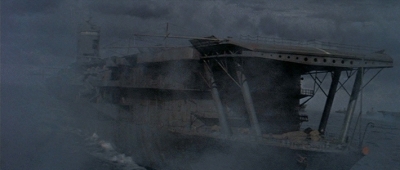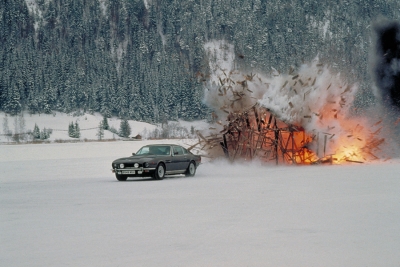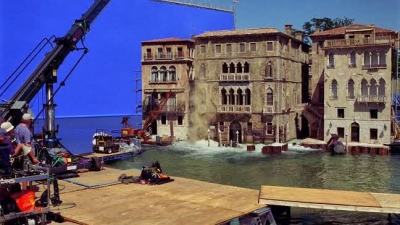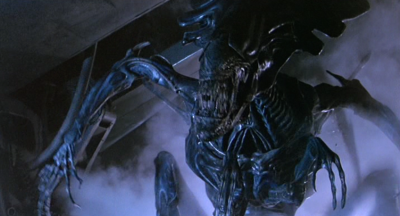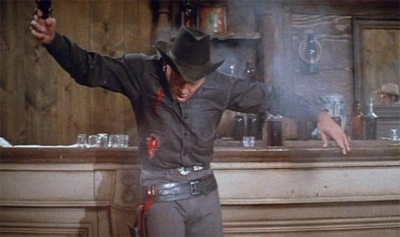
Violence has been a feature of movies almost from the beginning – starting with the first silent film to tell a story, The Great Train Robbery (1903), a Western.
In the early days, bullets hitting walls, bottles or fences were actually fired by a marksmen using live ammunition. But it was potentially dangerous and other techniques to be developed.
For bullets splintering a wooden wall, detonator caps of gunpowder were inserted and exploded to synchronise with the gunshot. For bullet hits on people, a similar cap was attached to a metal plate that the actor wore under his clothing. The cap was electrically denoted by wires leading to a technician’s ‘keyboard’. But it could result in burns or lacerations from fragments.
So effects men developed the ‘squib’ – a small, smokeless, non-metallic, explosive charge. It can be denoted by small batteries strapped to the actor, by wires from a control board, or by radio control.
For her ‘death’ in Bonnie and Clyde (1967), Faye Dunaway had scores of squibs concealed beneath her clothing. The effects man Danny Lee arranged them in sequences, and they were wired to an off-camera battery which detonated them in sequences. The car in which Bonnie was machine-gunned was first punched with holes into which squibs were inserted and then painted over. Faye Dunaway’s body shook with convulsions as the bullets peppered her. The scene was shot at high speed which played back normally gave the killing a slow, dreamlike quality.
The Wild Bunch (1969) made use of lots of fake blood. The effects man Bud Hulburd attached latex ‘blood bags’ to the squibs. The bags were filled with bright red, gelatine-based fluid. When the squibs burst the bags, the ‘blood’ spurted.
To create the effect of a spear, arrow or knife striking someone, the most common technique is to fire the projectile, which is hollow, along a wire from a compressed air device. The wire is attached to a metal plate strapped under the actor’s clothing. The spear speeds along the wire and thuds into a cork pad fixed to the plate.
Picture Credit : Google

